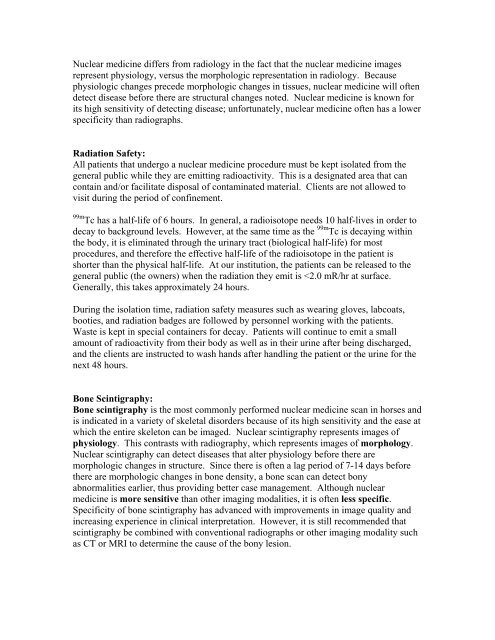Equine Bone Scintigraphy - University of Minnesota
Equine Bone Scintigraphy - University of Minnesota
Equine Bone Scintigraphy - University of Minnesota
Create successful ePaper yourself
Turn your PDF publications into a flip-book with our unique Google optimized e-Paper software.
Nuclear medicine differs from radiology in the fact that the nuclear medicine imagesrepresent physiology, versus the morphologic representation in radiology. Becausephysiologic changes precede morphologic changes in tissues, nuclear medicine will <strong>of</strong>tendetect disease before there are structural changes noted. Nuclear medicine is known forits high sensitivity <strong>of</strong> detecting disease; unfortunately, nuclear medicine <strong>of</strong>ten has a lowerspecificity than radiographs.Radiation Safety:All patients that undergo a nuclear medicine procedure must be kept isolated from thegeneral public while they are emitting radioactivity. This is a designated area that cancontain and/or facilitate disposal <strong>of</strong> contaminated material. Clients are not allowed tovisit during the period <strong>of</strong> confinement.99m Tc has a half-life <strong>of</strong> 6 hours. In general, a radioisotope needs 10 half-lives in order todecay to background levels. However, at the same time as the 99m Tc is decaying withinthe body, it is eliminated through the urinary tract (biological half-life) for mostprocedures, and therefore the effective half-life <strong>of</strong> the radioisotope in the patient isshorter than the physical half-life. At our institution, the patients can be released to thegeneral public (the owners) when the radiation they emit is
















